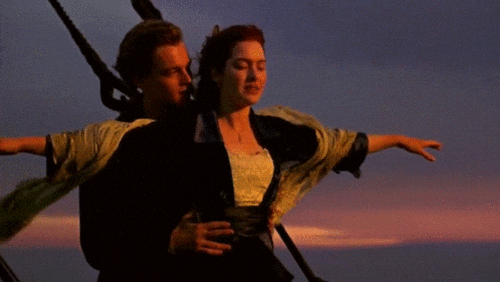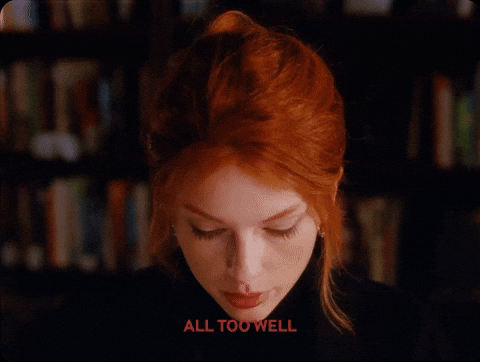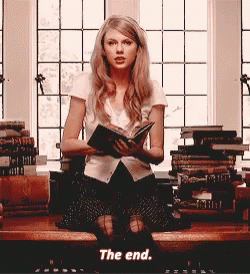Stories Within Stories: From Chaucer to Taylor Swift
Our 100th episode (!!) on songs that transcend time is streaming now!
This week we are celebrating 100 episodes! That’s 100 episodes of our standard programming - show & tells and deep dives, not including any of our bonus content. Wow. WOW! If you’ve been along with us for this ride, thank you. If you’ve just joined us recently — welcome! 100 episodes in and we are all still so excited about everything we have yet to talk about.
This week we’re tying Taylor Swift to Medieval England, because some things never change - women fighting for agency, authority, and the right to write their own stories. In this milestone 100th episode, we go full literary nerd and explore the surprising connections between Geoffrey Chaucer's iconic Wife of Bath from The Canterbury Tales and Taylor Swift's empowering anthems. By looking at Blank Space, New Romantics, and The Man, we examine how both the 14th-century literary character and the 21st-century pop star challenge societal expectations, manipulate narratives to their advantage, and advocate for women's autonomy in love and life.
🎧 Listen above and ⬇️ scroll below to read Maansi’s extra credit on frame narratives in history, modern times, and Taylor Swift.
✨ We want to hear from you! ✨
Whether you listen weekly, read occasionally, or just joined us—this quick survey helps us understand who’s here and how to make the podcast + newsletter even better. It takes 5 minutes, and we’d be so grateful for your input.
📜 This Week’s Extra Credit by Maansi
This week on AP Taylor Swift, we discussed The Canterbury Tales by Geoffrey Chaucer. While we focused on specific stories from this larger collection, I wanted to take the time to focus on the broader structure of the stories. The Canterbury Tales is an example of a literary device called the frame narrative, or frame stories. Even if you’ve never read Canterbury Tales, frame narratives have been around for an incredibly long time as a popular way of storytelling, and chances are, you have encountered them in some form.
Frame narratives allow the writer to tell a story, or many stories within a broader story, or frame, if you will. Each story can be told by a different speaker, as in The Canterbury Tales, but the writer, and often another narrator, is the one telling the bigger story of all the little stories. These layers of storytelling allow the author to give more context, provide commentary, and develop characters and plot lines in a more dimensional way.
Frame narrative origins
The frame narrative is an ancient technique — there are examples of frame stories from ancient Egypt, and Hindu mythology. In fact, two epics in Hindu literature that I’ve referenced before on the show, the Mahabharata and the Ramayana can be considered frame narratives because the great poets that wrote them insert themselves into the telling of the stories. A very well known collection of animal fables called Panchtantra is also a well-known frame narrative that originated in India. Frame narratives gradually made their way into what is known today as Western literature — the One Thousand and One Nights, or Arabian Nights, were collected from all over the world, written first in Arabic and Persian, and then eventually in English, the Decameron was written in the 1300s by Giovanni Bocaccio, and of course, the Canterbury Tales by Chaucer in the 1400s.
More modern interpretations of frame narratives
Frame narratives continue to be popular storytelling devices. The Titanic is an example of a modern day frame narrative. The movie opens with the older lady talking to a group of sea explorers, but as she goes into time, while there is a broader story of the Titanic and how it sank, there are smaller stories about Rose & and the people she met along the way. Forrest Gump is another example of a frame reference, where we are listening to Forrest recount the story of his life, of him and Jenny, but also within that tale, we learn about stories of important moments through history through Forrest’s POV.
Frame narratives in Taylor Swift’s writing
Of course the greatest writer of our generation would also definitely leverage frame narratives, so you’ll be excited to learn that Taylor’s music has examples of this device as well! The original song All Too Well is just a song, albeit an extraordinary one. But the music video for All Too Well (10 Minute Version)(Taylor’s Version)(From The Vault) is told as a frame narrative. We get a series of small stories from the course of the speaker’s relationship, but at the end of the video, we learn that the real narrator is an older woman who has written a book, the story of this song.
A bigger frame narrative, in the shape of an album, is the story of Folklore. While it’s not explicitly a frame narrative in the same way The Canterbury Tales is, Folklore is conceptually doing the same thing. Taylor Swift, as a writer, is the ultimate narrator, curating a selection of songs, in place of stories, to tell us a broader story about characters such as Betty, Augustine, and a boy they both loved through songs like “Cardigan,” “August,” and “Betty.” She’s spoken about how the album takes inspiration from the idea of storytelling, and the way she weaves similar motifs and imagery through multiple songs creates a sense that all these little vignettes are connected to convey a larger story that is the album itself.
Have any favorite frame narratives in Taylor’s music or elsewhere? We would love to hear from you!
Want to hear even more from us?
Our first After School episode is out, for our paid subscribers only! For those of you who can’t get enough, we will be releasing exclusive bonus content monthly for our paid subscribers. Free subscribers will continue to be able to access our usual episodes and extra credit substacks.
The Canterbury Tales and Taylor Swift: Why Medieval Literature Still Matters for Modern Swifties
This Month's After School Episode: The Canterbury Tales by Geoffrey Chaucer






